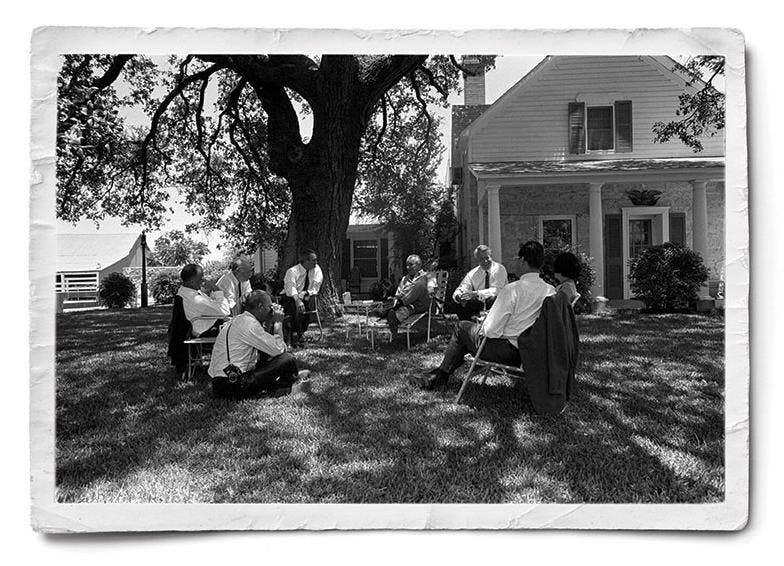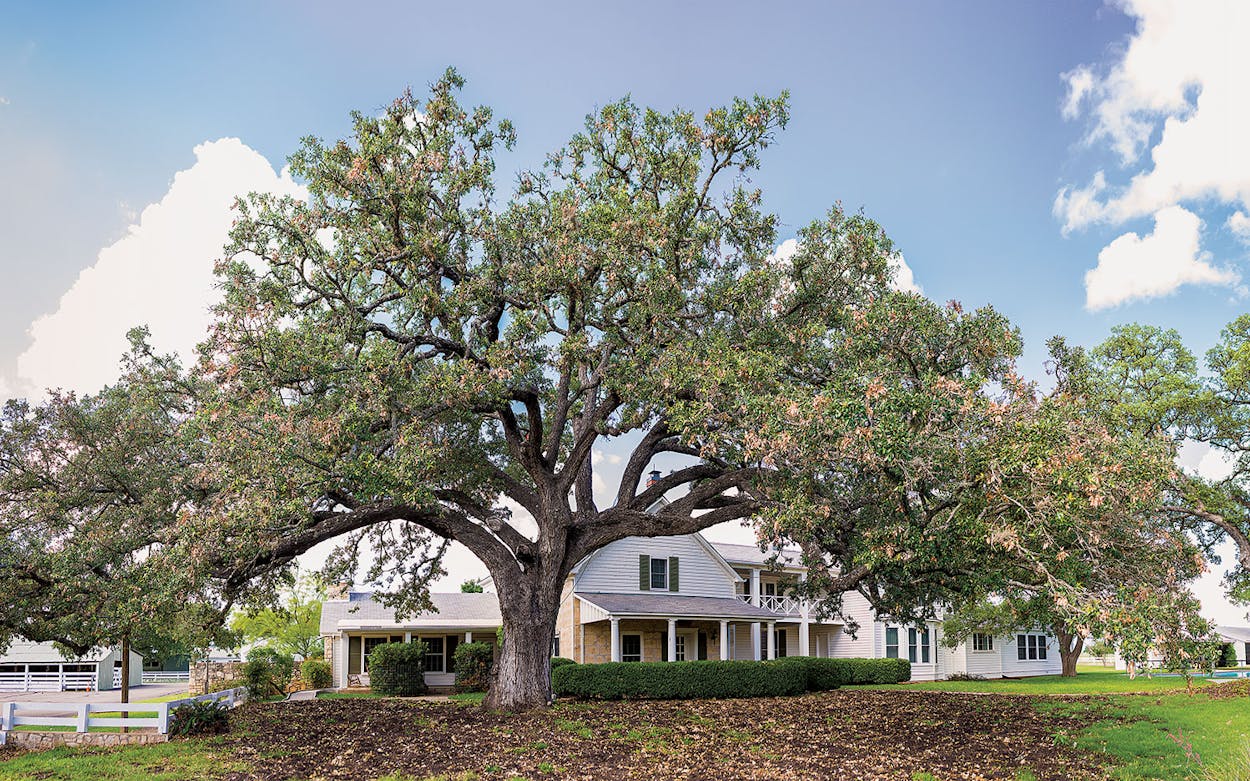Lyndon B. Johnson liked to conduct the nation’s affairs while sitting in a lawn chair beneath a live oak tree. The front yard of his Texas White House, in Stonewall, may lack the gilded opulence of, say, Mar-a-Lago, but it does offer a fine view of the Pedernales River, and it’s where the president and his staff members debated some of the most critical issues of the sixties. Over time, the sprawling tree that provided the shade for these outdoor powwows has come to be known as the Cabinet Oak, and visitors can still find it at LBJ’s namesake ranch, which is part of the Lyndon B. Johnson National Historical Park. But now the Cabinet Oak is in trouble. There’s been a progressive thinning of the tree’s crown, and brown splotches mark dead spots in the canopy. One particularly prominent limb is being propped up by a wooden post. At an estimated three hundred years old, is the Cabinet Oak a goner?
“That tree is like a member of our family. As it has aged, we have aged,” said LBJ’s daughter Lynda Johnson Robb. “We used to sit outside and speculate about all the things it has seen, because it’s supposed to be very old. From our stories, like most tall tales of Texas, it was practically there with the dinosaurs. We love that tree. It glorifies the front yard. We have to save the tree.”

Live oaks can survive three or four centuries. This one was already a couple of hundred years old when original owner William “Polecat” Meier built the house’s first section, in 1894.
LBJ purchased the home from his aunt in 1951. He loved to sit in its shade, Lady Bird once recalled, “particularly around sunset, from the earliest spring until cold weather drove us in.”
The Cabinet Oak had been declining for years, but it took a hard turn in 2016. That May, Robert Edmonson, a Texas A&M forest service biologist in Johnson City, pieced together the clues—a sick tree in a soggy lawn—and offered a tentative diagnosis: root rot.
It turns out that the Johnsons sodded the lawn with Saint Augustine grass, which needs a lot of water. Because of all that watering, the ground eventually became soggy, “drowning” the tree roots, which could no longer take in enough air and nutrients.
The Saint Augustine had to go. Park contractors ripped up the turf and are now adding compost and mulch, aerating the soil, and spraying an eco-friendly pesticide to protect the vulnerable leaves.
There are other issues: Roads and additions to LBJ’s ranch house have covered much of the extended root system. Utility lines and the sprinkler system also cut through many roots.
But with the extra care and a little luck, the Cabinet Oak could still outlive us all. “Things are looking much better,” says Edmonson. “That tree has got many, many, many more years in it.”









